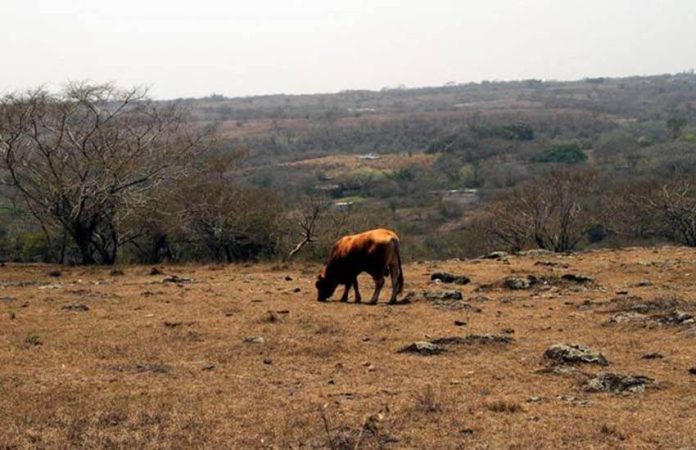When I moved to my current address a little over two years ago, I was delighted to find the property filled with plants: bougainvillea and fragrant angel’s trumpets in the front and a thriving lime tree, pomegranate tree and blackberry bush in the back. There are some strawberries under it too!
My first memories of being in this house during those shocking first few weeks of the pandemic are of my daughter and I sitting on our back patio and eating blackberries right off the thorny vine.
This was a special privilege to me because while I’ve always loved having plants around, I’ve never been very good with them; my thumb is blood red, not green.
In most places I’ve lived, my plants have survived for a few months before perishing. It’s not that I want them dead, it’s just that I forget about them because they’re not jumping up and down around me, demanding things like children or dogs do.
Find the right place for them in Xalapa, though, and pretty much anything will grow and stay alive indefinitely. Vanilla vines and even honeysuckle (not a common plant down here — it’s called, romantically, madreselva, if you want to ask for it) are thriving, as are the sturdy lantanas, my favorite. My jasmine has been taken over by some other kind of vine, but it’s still kicking.
I’ve planted a magnolia tree in the backyard. Fragrant herbs (rosemary is my favorite) and the lavender and citronella plants haven’t fared quite so well, as I put them on balconies leading into rooms in the vain attempt to prevent mosquitoes from coming in to feast on us. (I’ve found a mosquito-zapping racquet to be much more effective and oh-so-satisfying)
I think it’s too much sun and not enough water paired with general unintentional neglect: when you’ve got a kid and a bunch of freelance jobs, plants just naturally file themselves into the back of the line and my attention span.
Mostly, though, it hasn’t been an issue in this city. I used to joke that Xalapa was so fertile that you could let a few seeds fall out of your pocket accidentally and there’d be a tree there the next morning.
For the first time since I came here nearly 20 years ago, that no longer seems true.
Though the drought that’s caused Monterrey to restrict water use to six hours a day hasn’t been as bad down here, it was “Xalapa-dramatic.”
Last month, we had more weeks of sunshine with no rain than I can remember. It was also so much consistently hotter — I mean, not Texas hot, but still — than I remember it being in quite a while.
The dirt and gravel road in front of my house (trying to get it paved will be a subject for an entirely different article) dried out completely, and the hot wind blowing in through the window has covered everything in my house with a layer of dust daily. Was this really Xalapa?
For the first time ever, I needed to water my outdoor plants that were planted in the ground. My blackberry bush, which normally thrives and spills over with life in late April and May, was drying out, its berries coming out more like raisins than the plump fruit I was used to. All the plants I had in the sun were parched daily.
Spring, not summer, is the hottest season around here, which I know. It’s what kept me from worrying too much at first, as I knew there’d be a few weeks of not being able to sleep from a combination of the heat and the mosquitoes finding their way through my net.
After three weeks had gone by, though, I started to really worry; I have no memory of going more than two weeks without rain in Xalapa.
Climate change is happening, and it’s happening fast. When I first arrived here, most days were the same: a sunny morning, clouds rolling in around one or two in the afternoon, a couple hours of light rain/drizzle (famously called chipi chipi in Xalapa) and then, often, fog in the evenings. Leaving the house any day of the year without a sweater was never advisable.
It’s been years now since I’ve seen fog more than once a month, but the drying out of those plants is what really freaked me out. Could this beautiful city that’s spilling over with green everywhere soon become a desert?
Blessedly, the rain has returned to my city. My house is a little less dusty. But, like the rest of the country that’s been enduring drought this year, I’m worried. Though things aren’t as dramatic as in Monterrey, our water is being rationed, and our colonias are all taking turns going without water.
Whatever happened to the government’s promise to fix this with inventive rainwater collection systems? While it wouldn’t get water to Monterrey right away, having them in places with plenty of rain (well, for now, anyway) could at least ensure that unused water is diverted to the places that need it most.
Water is becoming a real crisis, and likely will continue to be so for a while, irrespective of borders. It’s time to figure out how to deal with this now; not when being unable to flush a toilet will be the least of our problems compared to the prospect of not being able to keep our food growing.
I saw a meme the other day commenting on the growing heat. “This is the hottest summer of my life,” says Bart Simpson, standing in for all young people. Homer leans down and says, “This is the coldest summer of the rest of your life.”
Yikes.
Sarah DeVries is a writer and translator based in Xalapa, Veracruz. She can be reached through her website, sdevrieswritingandtranslating.com and her Patreon page.
